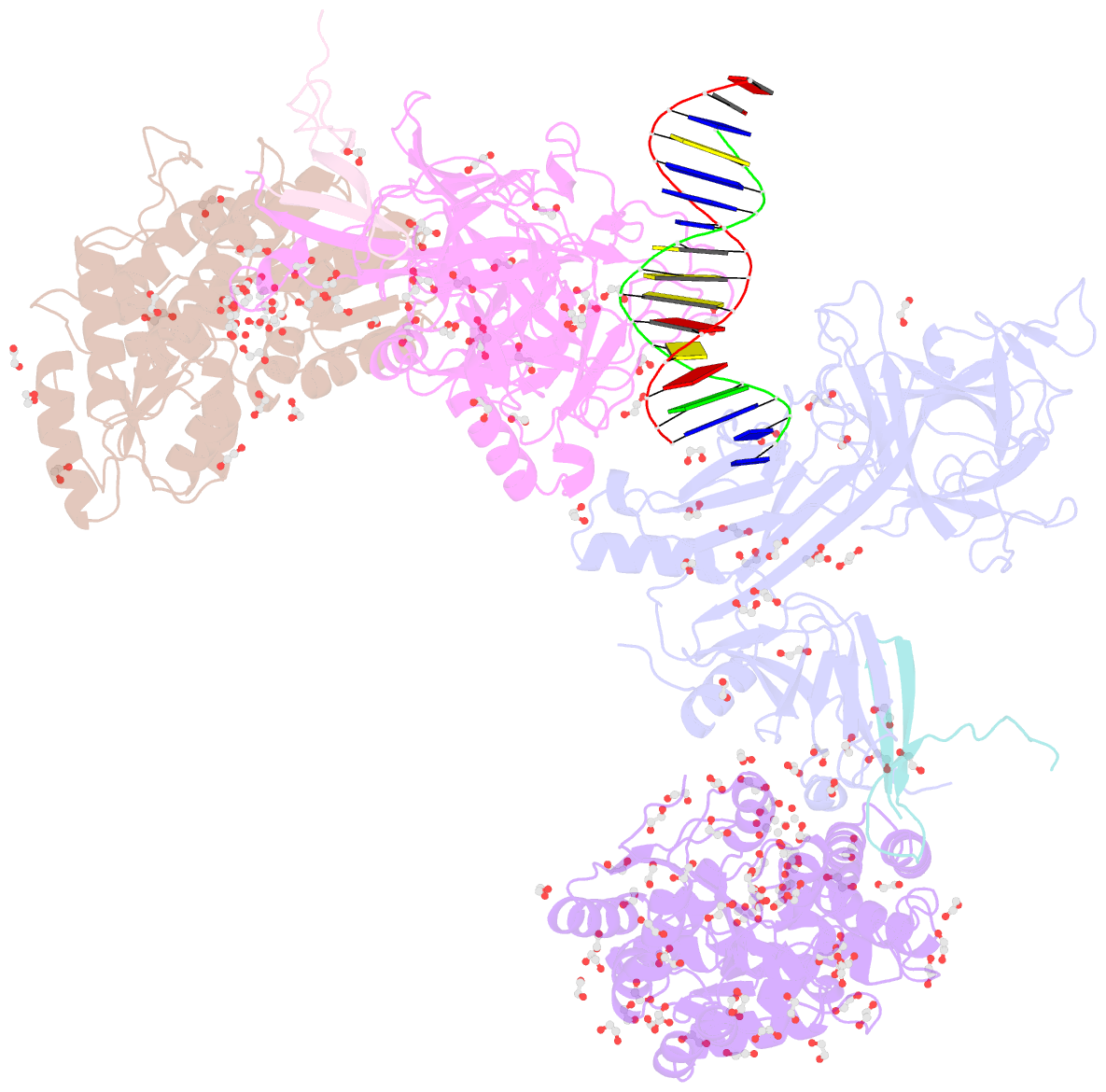Summary information and primary citation
- PDB-id
- 5e24; SNAP-derived features in text and JSON formats;
DNAproDB
- Class
- transport-DNA binding-DNA
- Method
- X-ray (2.14 Å)
- Summary
- Structure of the su(h)-hairless-DNA repressor complex
- Reference
- Yuan Z, Praxenthaler H, Tabaja N, Torella R, Preiss A, Maier D, Kovall RA (2016): "Structure and Function of the Su(H)-Hairless Repressor Complex, the Major Antagonist of Notch Signaling in Drosophila melanogaster." Plos Biol., 14, e1002509. doi: 10.1371/journal.pbio.1002509.
- Abstract
- Notch is a conserved signaling pathway that specifies cell fates in metazoans. Receptor-ligand interactions induce changes in gene expression, which is regulated by the transcription factor CBF1/Su(H)/Lag-1 (CSL). CSL interacts with coregulators to repress and activate transcription from Notch target genes. While the molecular details of the activator complex are relatively well understood, the structure-function of CSL-mediated repressor complexes is poorly defined. In Drosophila, the antagonist Hairless directly binds Su(H) (the fly CSL ortholog) to repress transcription from Notch targets. Here, we determine the X-ray structure of the Su(H)-Hairless complex bound to DNA. Hairless binding produces a large conformational change in Su(H) by interacting with residues in the hydrophobic core of Su(H), illustrating the structural plasticity of CSL molecules to interact with different binding partners. Based on the structure, we designed mutants in Hairless and Su(H) that affect binding, but do not affect formation of the activator complex. These mutants were validated in vitro by isothermal titration calorimetry and yeast two- and three-hybrid assays. Moreover, these mutants allowed us to solely characterize the repressor function of Su(H) in vivo.





